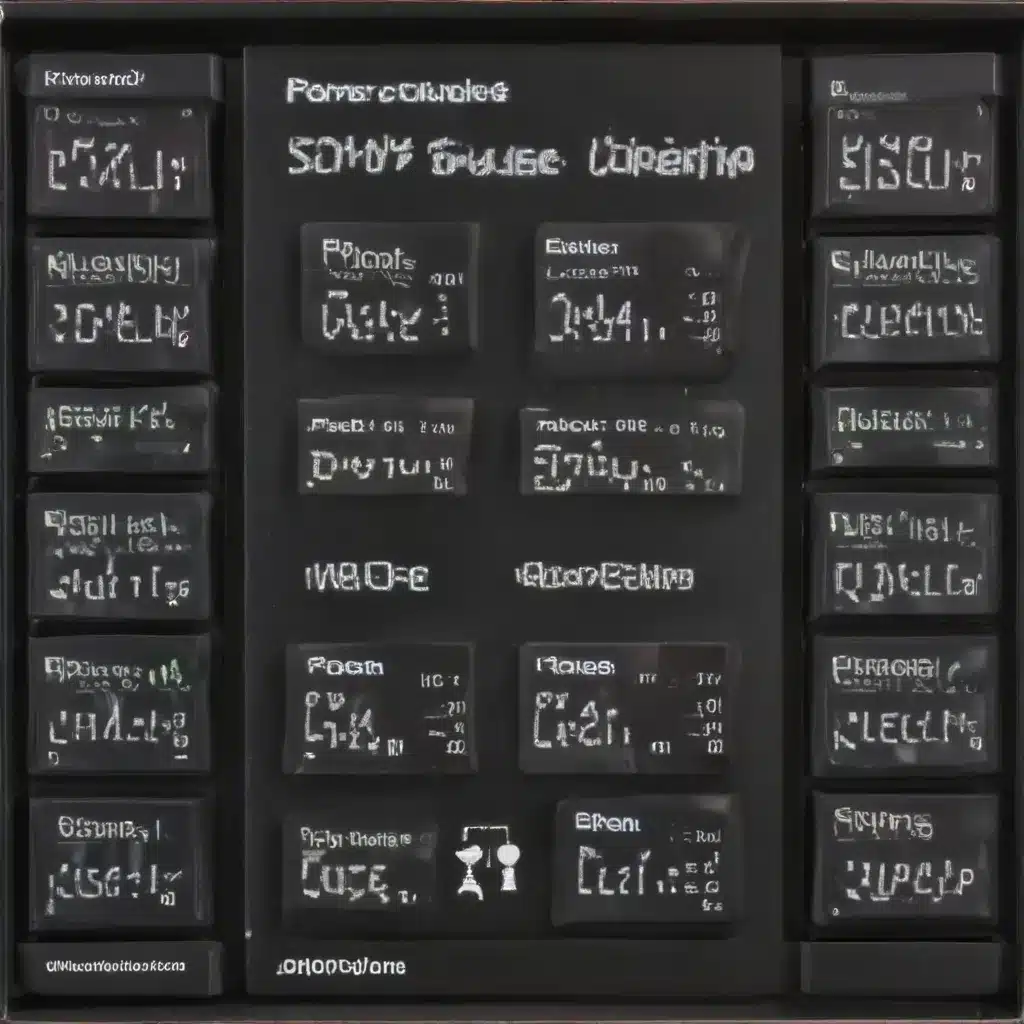
Comparative Analysis of Power Consumption in Open Source Tools
The Importance of Energy Efficiency in Software Selection
In today’s digital landscape, where computing power is integral to our personal, professional, and industrial endeavors, the environmental impact of software applications has become a pressing concern. As the world grapples with the challenges of climate change and resource depletion, it is crucial to understand the energy consumption characteristics of different software types and make informed decisions that promote sustainable computing practices.
The distinction between open-source and proprietary software is a key factor in this discussion. Open-source software (OSS), with its collaborative development model and community-driven optimization, often prioritizes code efficiency and resource management. In contrast, proprietary software, developed and controlled by a single entity, may focus more on feature sets and functionality rather than explicit energy optimization.
Measuring and Analyzing Software Power Consumption
Researchers have developed various methodologies and tools to measure and analyze the power consumption of software applications. These advancements have empowered developers and users to make more informed, power-aware decisions throughout the software lifecycle, from design and development to deployment and usage.
One such framework is the software-based power estimation approach proposed by Kumar and Srinivas, which leverages machine learning to predict application power based on resource utilization metrics. This technique enables developers to assess the energy efficiency of their software during the design and development stages.
Another comprehensive framework for profiling software power consumption was presented by Proedrou, which utilizes hardware counters and system calls to capture detailed resource utilization data. This data is instrumental in identifying energy-intensive software components, enabling targeted optimization efforts.
Beyond measurement and profiling, recent research has explored the impact of software design and code structure on power consumption. Studies have found that under specific conditions, simpler algorithms like selection sort can be more energy-efficient compared to complex ones like quicksort. Similarly, code refactoring and compiler optimizations have been shown to lead to substantial energy savings, emphasizing the importance of code maintainability and best practices throughout the development process.
Comparing Open-Source and Proprietary Media Players
To delve deeper into the power consumption characteristics of open-source and proprietary software, a comprehensive study was conducted to compare the energy usage of various media player applications.
The experiment involved measuring the CPU power package, GT core power, percentage of CPU usage, and physical memory consumption of 13 media players, including 5 open-source and 8 proprietary options. The hardware used for the study was an ASUS Vivobook S with an Intel Core i5-8265U processor and 8GB of RAM.
The results of the study revealed a notable difference in power consumption between the two categories of media players. Proprietary media players generally consumed less power compared to their open-source counterparts. Statistical analysis, including descriptive statistics and independent samples t-tests, confirmed these findings.
Proprietary Media Players Outperform Open-Source in Energy Efficiency
The data analysis showed that proprietary media players, on average, consume less power than open-source media players. This difference was statistically significant, indicating a reliable distinction between the two categories of software in terms of power efficiency.
Longer Response Times and Higher Resource Utilization Lead to Higher Energy Consumption
Further analysis revealed that factors such as response duration, total inference time, and response token length had strong positive correlations with energy consumption. This suggests that optimizing the response generation process could be more effective in reducing energy consumption than merely simplifying the input prompts.
Predictive Modeling for Energy Consumption
The study also explored the development of predictive models for estimating the energy consumption of media players. Using Random Forest (RF) models, the researchers found that when leveraging response characteristics as input features, the models demonstrated high predictive performance, with R-squared scores exceeding 0.97 in most cases. This highlights the potential for developing accurate energy consumption forecasting tools based on specific software metrics.
Implications and Recommendations
The findings of this study underscore the importance of considering energy efficiency in software selection and deployment. Proprietary media players, on average, demonstrated superior power efficiency compared to their open-source counterparts, suggesting that users and organizations aiming to reduce energy consumption should prioritize energy-efficient software options.
Moreover, the strong correlation between response characteristics and energy consumption indicates that optimizing the response generation process, such as constraining the length of responses, could be an effective strategy for reducing the environmental impact of software applications.
The development of predictive models for energy consumption further emphasizes the potential for data-driven decision-making in software selection and deployment. By leveraging these models, users and organizations can make more informed, power-aware choices, leading to substantial long-term energy and cost savings.
Conclusion
In the age of sustainable computing, understanding the power consumption characteristics of software applications is crucial. The comparative analysis of open-source and proprietary media players presented in this article highlights the importance of considering energy efficiency as a key factor in software selection and deployment.
The insights gained from this study demonstrate the potential for optimization and the adoption of more energy-efficient software practices across the IT landscape. By prioritizing power-aware software choices and employing strategies to optimize response generation, organizations and individuals can contribute to a more sustainable digital future.
As technology continues to evolve, the imperative to address the environmental impact of software remains a pressing challenge. The findings and recommendations presented in this article serve as a foundation for further research and the development of practical solutions that promote energy-efficient software ecosystems.












